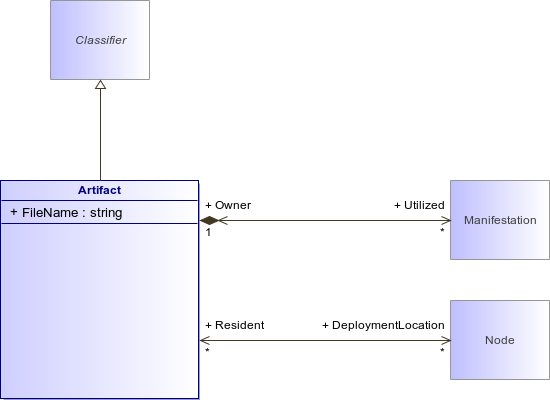
UML/BPMN Metamodel
Representation of a physical piece of information that is used or produced by a software development process, and that can be deployed to Nodes. Examples of Artifacts include model files, source files, scripts and binary executable files.
In the metamodel, an Artifact is a Classifier that represents a physical entity.
Artifacts can have Properties that represent features of the Artifact, and Operations that can be performed on its instances. Artifacts can be involved in Associations to other Artifacts, for example composition associations to Artifacts that are contained within it.
Artifacts can be instantiated to represent detailed copy semantics, where different instances of the same Artifact may be deployed to various Node instances (and where each may have separate property values, for example for a time-stamp property).
In Modelio, deployment or imbrications of Artifacts are modeled using the internalStructure mechanism. This provides a simpler, more formal and general mechanism that justifies metamodel differences to the standard, but enhances usability.
In Modelio, an Artifact is a NameSpace, and therefore belongs to its owner NameSpace, which can be a Component, a Package, an Artifact or a TemplateParameter.

Figure 191 : Artifact (architecture_autodiagram)
Attribute | Description |
|---|---|
string FileName [1..1] | The file system name for the Artifact. |
Association | Description |
|---|---|
The set of model elements that are manifested in the Artifact. These model elements are utilized in the construction (or generation) of the artifact. | |